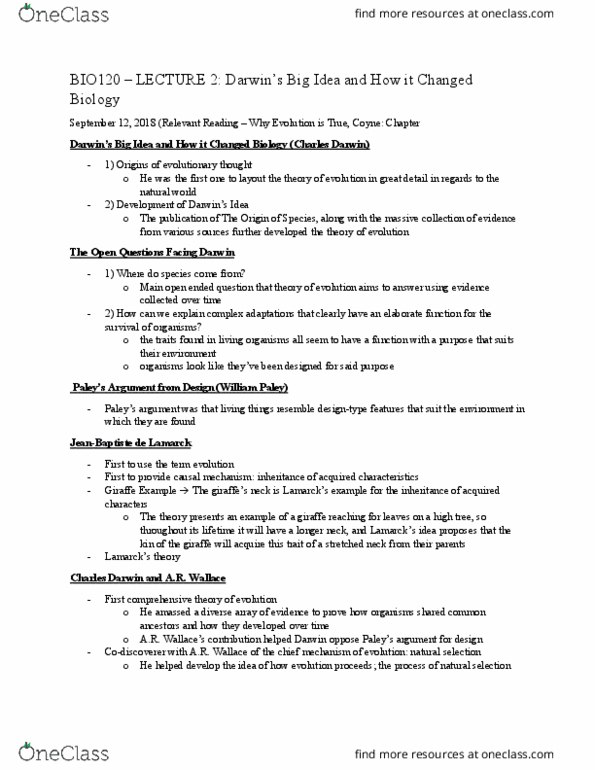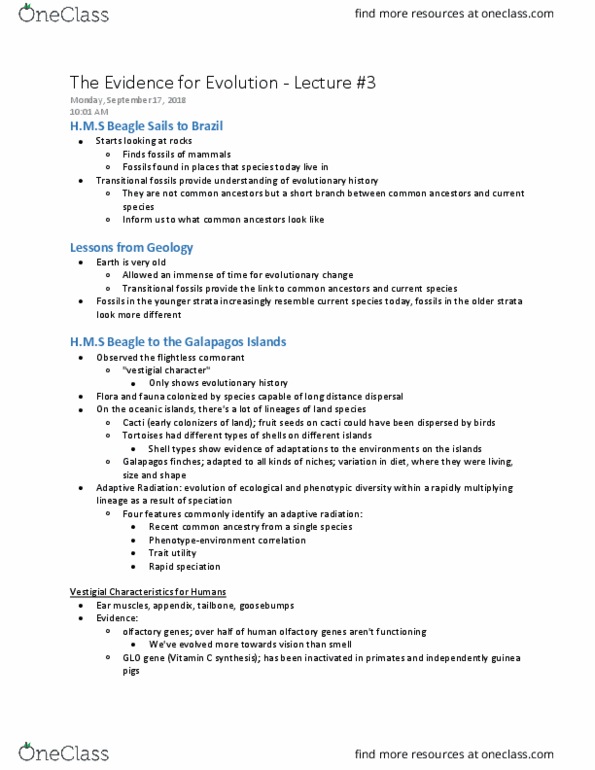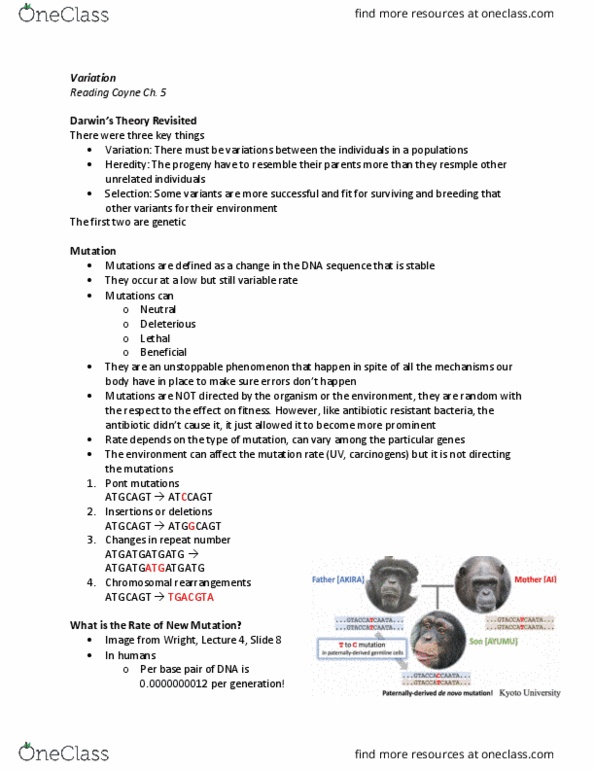BIO120H1 Lecture Notes - Lecture 3: Endemism, Adaptive Radiation, Hms Beagle
BIO120H1 verified notes
3/25View all
Document Summary
Inform us to what common ancestors look like. Lessons from geology: earth is very old, allowed an immense of time for evolutionary change, transitional fossils provide the link to common ancestors and current species. Fossils in the younger strata increasingly resemble current species today, fossils in the older strata look more different. H. m. s beagle to the galapagos islands: observed the flightless cormorant. H. m. s to australia: endemism: unique to only one place and nowhere else. Speciation and divergence needs isolation to proceed: banksia is rodent pollinated, marsupials occupy many of the niches. Long periods of isolation brought about many more different adaptations and species than other places. Evidence from biogeography: convergent evolution, geographically close organisms resemble each other, different groups of organisms adapt to similar environments in different parts of the world, geographically isolated regions have unusual organisms, pattern of isolation and speciation matters. Darwin also used evidence from his domestic environment: dog breeding, plant variation, corn.




